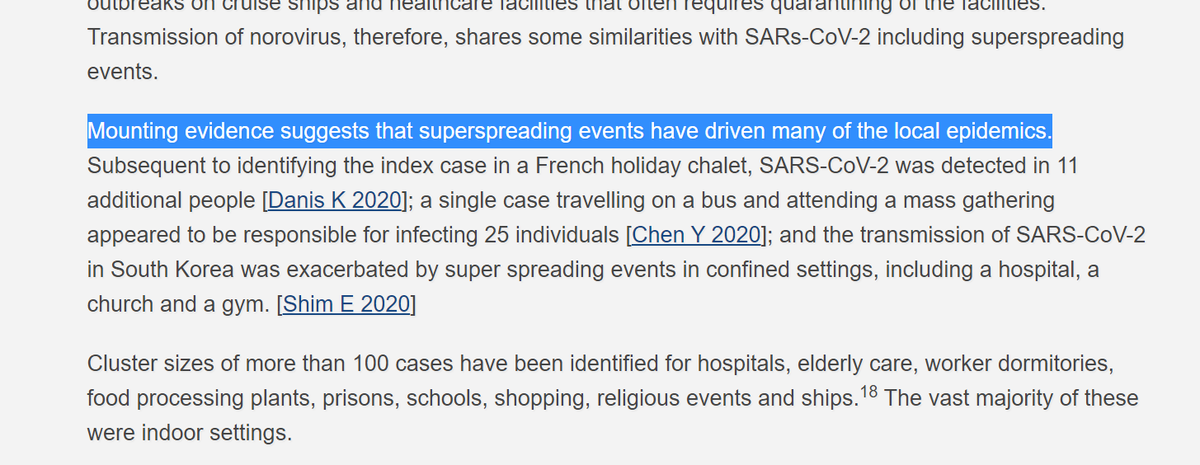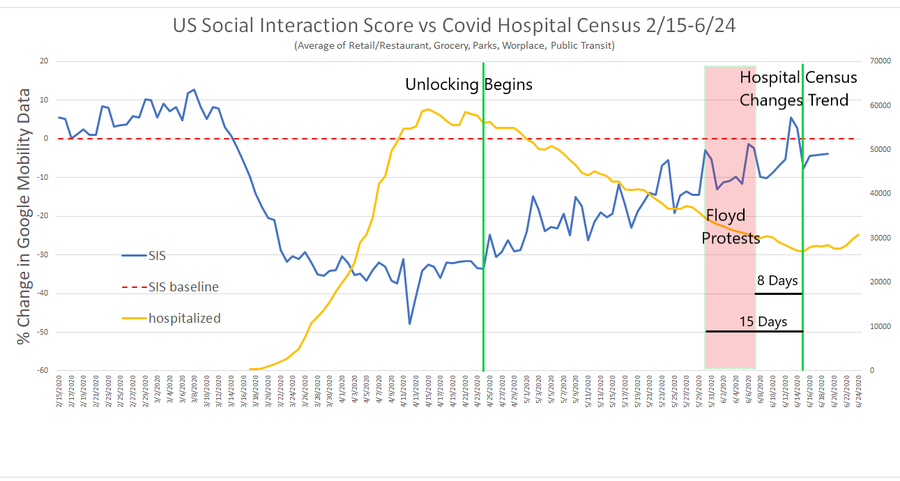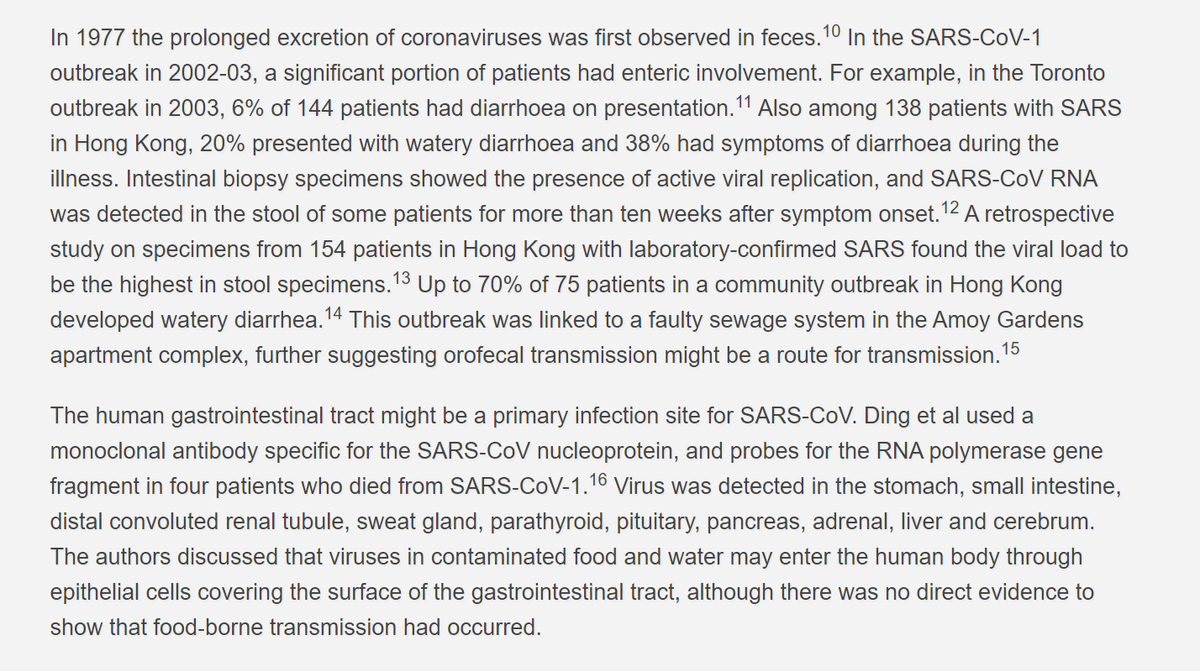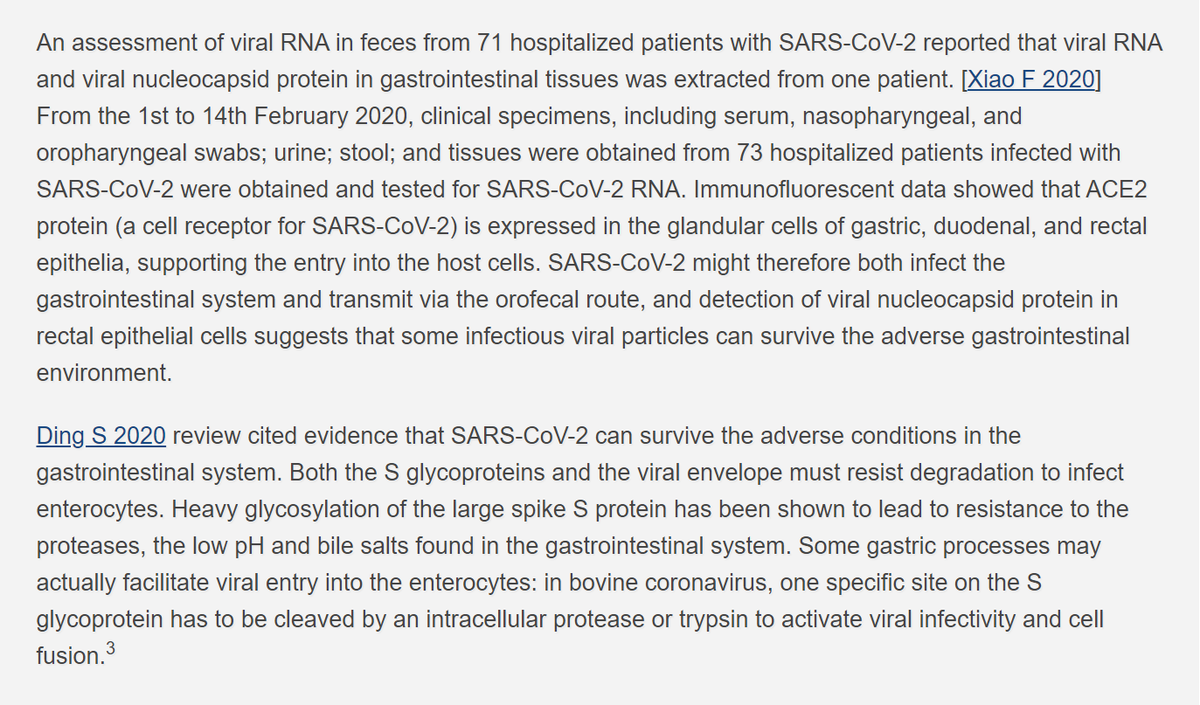this has been my bet for some time: when this is all said and done, there is going to be a strong source contamination fecal/oral route infection pathway for covid19.
the pattern of infection suggests it quite strongly and the hard evidence is mounting. https://www.cebm.net/covid-19/sars-cov-2-and-the-role-of-orofecal-transmission-evidence-brief/">https://www.cebm.net/covid-19/...
the pattern of infection suggests it quite strongly and the hard evidence is mounting. https://www.cebm.net/covid-19/sars-cov-2-and-the-role-of-orofecal-transmission-evidence-brief/">https://www.cebm.net/covid-19/...
let& #39;s be clear about what i am and am not saying here:
this is not the only infection vector. no one is arguing that. but it IS an important one and perhaps even the predominant one for severe cases.
this is not an easy thing to test, so evidence is going to be tricky.
this is not the only infection vector. no one is arguing that. but it IS an important one and perhaps even the predominant one for severe cases.
this is not an easy thing to test, so evidence is going to be tricky.
but it fits a set of patterns around cruise ships, hospitals, & wuhan that do not make a great deal of sense otherwise
consider wuhan: this was a serious outbreak in china. yet it did not spread despite millions of residents traveling for CNY https://www.dailymail.co.uk/news/article-7910833/Swarms-Wuhan-residents-hit-road-ahead-Chinese-New-Year-amid-global-fears-deadly-virus.html">https://www.dailymail.co.uk/news/arti...
consider wuhan: this was a serious outbreak in china. yet it did not spread despite millions of residents traveling for CNY https://www.dailymail.co.uk/news/article-7910833/Swarms-Wuhan-residents-hit-road-ahead-Chinese-New-Year-amid-global-fears-deadly-virus.html">https://www.dailymail.co.uk/news/arti...
one would have expected them to act as an armada of coronavirus johnny appleseeds and spread virus. this was LONG before any controls.
yet they did not. places they traveled did not flare up and the intense outbreak stayed localized.
this seems to imply source infection.
yet they did not. places they traveled did not flare up and the intense outbreak stayed localized.
this seems to imply source infection.
something in wuhan was spreading this and whatever it was did not seem to travel with the citizens.
i have heard it speculated that it was sanitation issues and a lack of good sewage handing/proper ubends etc in plumbing.
i do not know if and to what extent that& #39;s true.
i have heard it speculated that it was sanitation issues and a lack of good sewage handing/proper ubends etc in plumbing.
i do not know if and to what extent that& #39;s true.
but it& #39;s an intriguing theory and one i& #39;d love more info on if anyone has it.
but clearly something led to this strong, localized outbreak that did not spread despite the fact that the people did.
we see same on ships and hospitals as clusters look localized.
but clearly something led to this strong, localized outbreak that did not spread despite the fact that the people did.
we see same on ships and hospitals as clusters look localized.
much has been made of postulated "super-spreaders" where one individual is presumed to have infected many.
this has always seemed suspicious to me. why would one person be so infective?
what if this is not about super-spreading individuals but rather superspreading sources?
this has always seemed suspicious to me. why would one person be so infective?
what if this is not about super-spreading individuals but rather superspreading sources?
it would explain this data around the lack of close contact transmission and the data showing extremely high rates of inter-family transmission.
i would LOVE to see transmission data broken down by "shares a bathroom" as a variable.
my suspicion is that it would show strong R2.
i would LOVE to see transmission data broken down by "shares a bathroom" as a variable.
my suspicion is that it would show strong R2.
the protests in the US seem to have stirred up covid in the US.
anyone who has ever been to a big outdoor festival can tell you: the potty is a big deal.
imagine the hastily assembled port o johns for 30k people and how poorly they got maintained around protests.
anyone who has ever been to a big outdoor festival can tell you: the potty is a big deal.
imagine the hastily assembled port o johns for 30k people and how poorly they got maintained around protests.
it& #39;s difficult to imagine a better transmission vector. many COV& #39;s, particularly alpha cov& #39;s cannot survive in the human digestive tract.
but sars-2 seems to. this was true of sars-1 as well.
both frequently present with GI symptoms and infect GI tissues.
but sars-2 seems to. this was true of sars-1 as well.
both frequently present with GI symptoms and infect GI tissues.
evidence that the virus can survive and replicate in the human digestive track looks convincing.
this does leave open the question of whether virus in stool is still viable, but this is surprisingly difficult to measure/establish and this same issue has arisen in nasal swabs.
this does leave open the question of whether virus in stool is still viable, but this is surprisingly difficult to measure/establish and this same issue has arisen in nasal swabs.
studies from singapore have shown for months that there is really a very narrow infection window when carriers are contagious and that while symptomatic carriers may be PCR+, those w/ viral loads below Ct ~30 are not infectious/lack viable virus.
https://www.ams.edu.sg/view-pdf.aspx?file=media%5c5556_fi_331.pdf&ofile=Period+of+Infectivity+Position+Statement+(final)+23-5-20+(logos).pdf">https://www.ams.edu.sg/view-pdf....
https://www.ams.edu.sg/view-pdf.aspx?file=media%5c5556_fi_331.pdf&ofile=Period+of+Infectivity+Position+Statement+(final)+23-5-20+(logos).pdf">https://www.ams.edu.sg/view-pdf....
this sort of source contamination/FO path also fit with clusters of severity as it would likely be associated with larger and more prolonged initial infective dose, a metric that seems strongly correlated to severity of covid19 infection.
so, there& #39;s clearly more work to be done here, but the case that cov19 is source spread and may have a significant fecal/oral route looks quite compelling.
it explains the clustering, the super-spreading in tight groupings, and the localization of outbreaks like wuhan.
it explains the clustering, the super-spreading in tight groupings, and the localization of outbreaks like wuhan.
it also explains the strangely low tendency to spread by close contact and yet strong tendency to spread in homes.
this may come down to "who do you share a bathroom with?"
this theory looks to fit the facts better than any other i have seen.
this may come down to "who do you share a bathroom with?"
this theory looks to fit the facts better than any other i have seen.

 Read on Twitter
Read on Twitter







